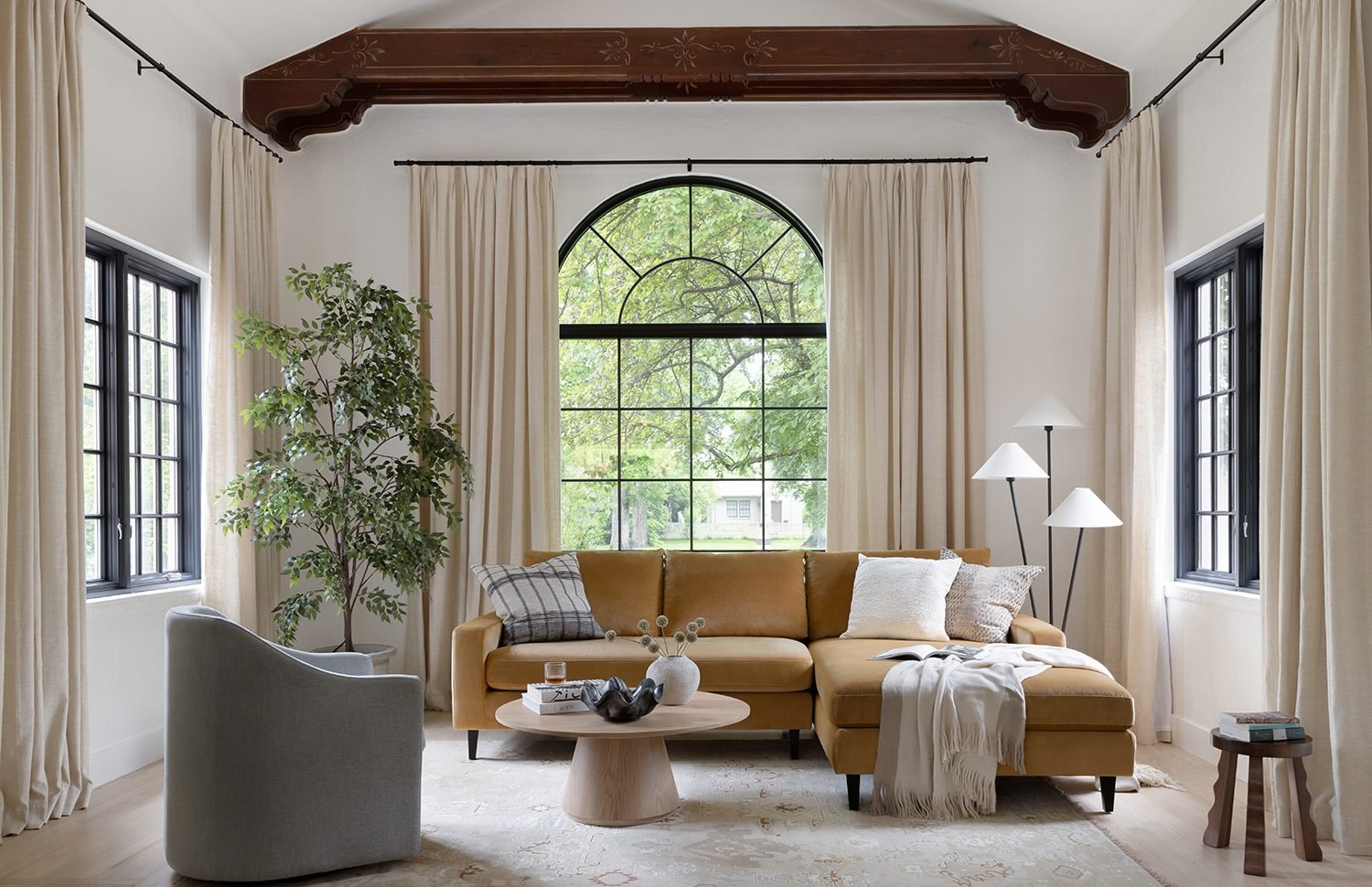If you can’t shake the feeling that your living room just isn’t quite right, listen to your instincts. Chances are, there’s something a bit off with your layout that’s causing these doubts. Believe it or not, just a few inches can be the difference between that out-of-sync vibe and a fully-functional flow.
The good news is, there are a handful of expert-approved rules you can follow to achieve a harmonious living room look and feel every. single. time. From specific measurements to ideal ratios, we’re sharing the simple fundamentals our designers stand behind for an ideal living room layout — but that doesn’t mean there can’t be exceptions.
We’re of the camp that rules are meant to be broken, so if something is working in your space (meaning it looks good and functions well), that’s the ultimate passing test. Consider the following list to be friendly guidelines from our design experts and use them as you wish. We know your flow is out there waiting to be found.
Before we get to the rules…
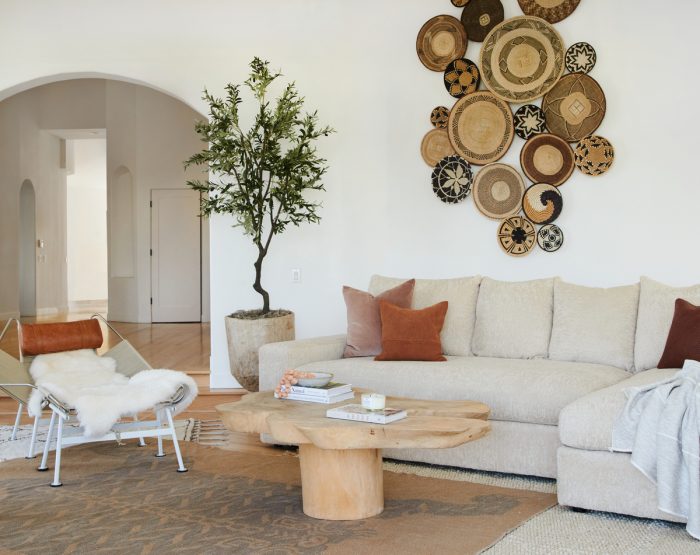
We want to provide a quick reminder of some key design principles that always apply — no matter which room you’re tackling. Proportion and scale, also known as to the relative size of one object compared to another and its surroundings, are pivotal parts of the design equilibrium puzzle. The Designer’s Digest version: you want your living room furniture to feel appropriately-sized to each other, and the space overall.
We also endorse the golden ratio, a mathematical ratio that has been used by artists and architects to produce aesthetically-pleasing moments for thousands of years. Modern day interior designers have interpreted this concept to mean that splitting a space into two-thirds and one-third sections, rather than in halves or quarters, results in a more balanced look.
Our living room layout tips & tricks
1. Leave ample space for walkways
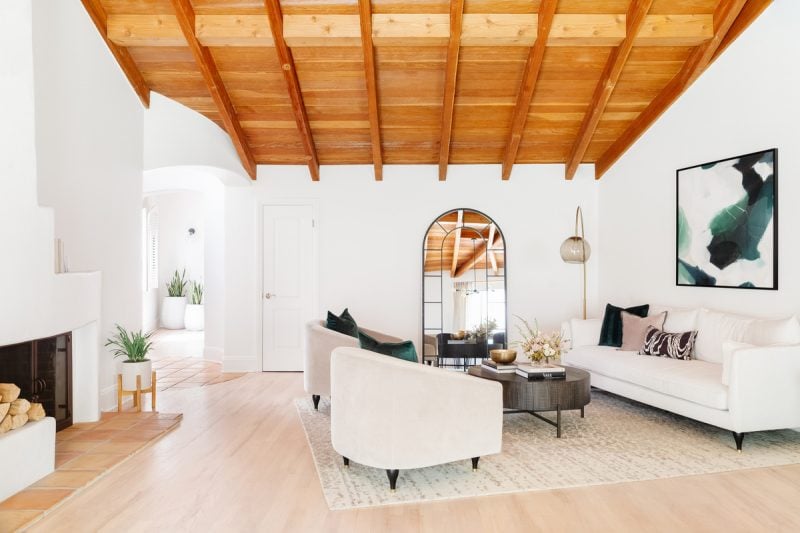
Allow for approximately 30-36 inches between large pieces of furniture for ample walking space. In certain instances, like a small living room, it’s okay to go down to 24 inches instead. This not only ensures that people can move freely throughout the room, but also avoids any sense of over-crowdedness.
2. Create optimal distance between seats

People should be sitting no less than three feet and no more than 10 feet apart, unless they’re intentionally cozying up next to each other on the sofa. The sweet spot between three and 10 feet offers a connected space for easy conversation without the too-close-for-comfort awkwardness – or alternatively shouting just to be heard.
3. Plan for leg room
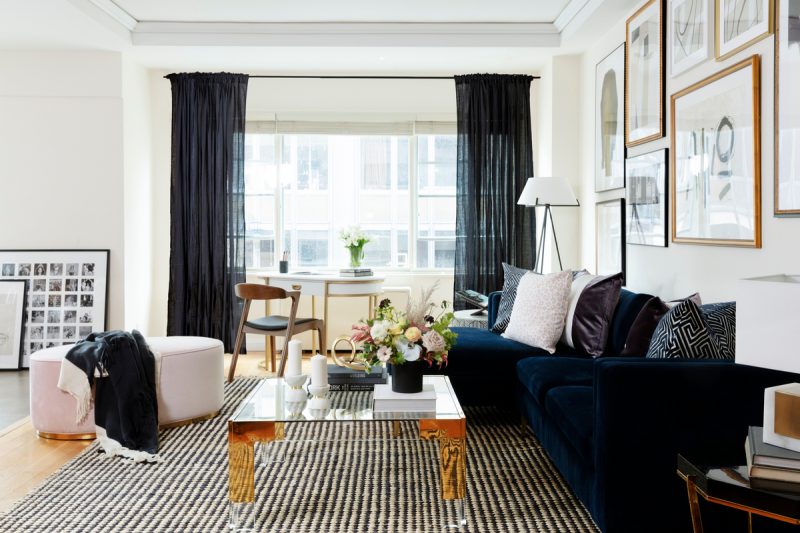
There are few things worse than a bruised shin. For comfortable leg room, the distance between the coffee table and the sofa should be 14-18 inches, which still allows you to reach your wine glass without strain.
4. Enhance the viewing experience
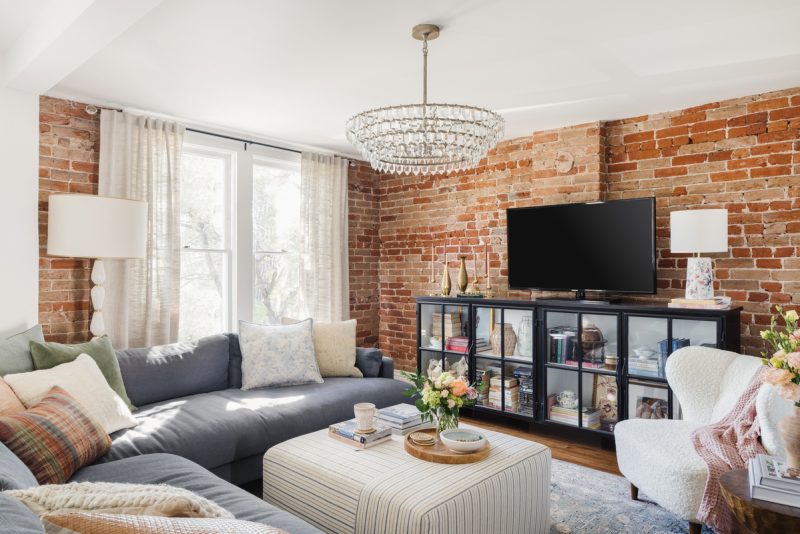
It’s a widely debated whether or not to include a television in your living room, but we believe good design suits you. And if your ideal living room is a place to unwind with a movie night or Netflix binge, we’re all for it. Just aim for about seven feet between your sofa and the TV for prime viewing pleasure.
5. Let the wall breathe

Whenever possible, pull the sofa three to five inches away from the wall to give it a little breathing room. This helps keep all the furniture from lining the perimeter of your room, which can feel claustrophobic.
6. Choose the right size sofa
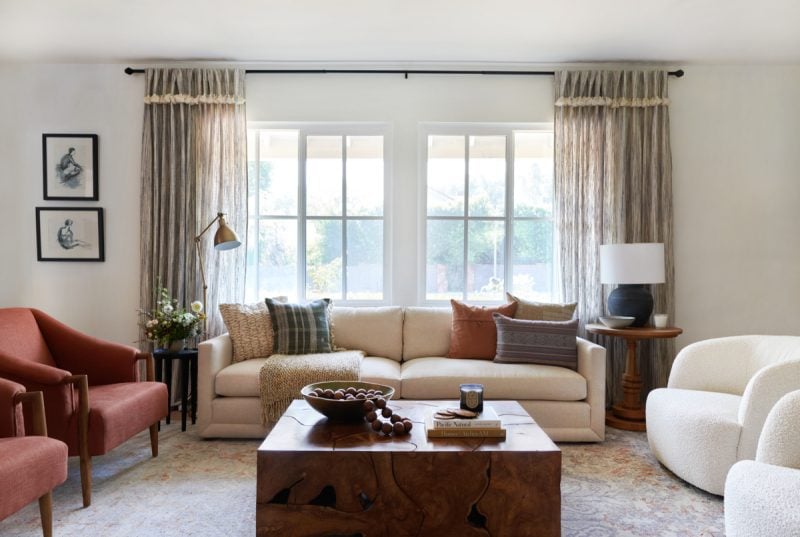
Unless you’re designing a custom couch, sofas are typically available in three standard sizes: 72 inches, 84 inches, and 96 inches. Use the golden ratio to determine the sofa size that’s proportionally right for your living room. It should be roughly two-thirds the length of the wall – or width span of the room – on which you’ll be placing it, so a 145-inch area calls for a 96-inch sofa.
7. Use the golden ratio for the coffee table, too
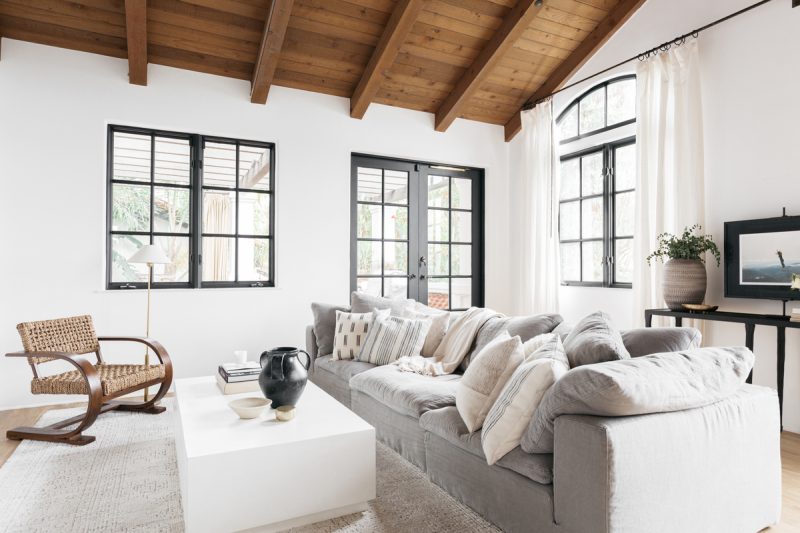
What can we say? The golden ratio really works. We generally aim for rectangular coffee tables to be about two-thirds the length of the sofa. For round coffee tables, the diameter should be at least half the length of the sofa. In terms of height, keep the coffee table within about three inches of the height of the sofa seat.
8. Coordinate your sofa and accent chairs
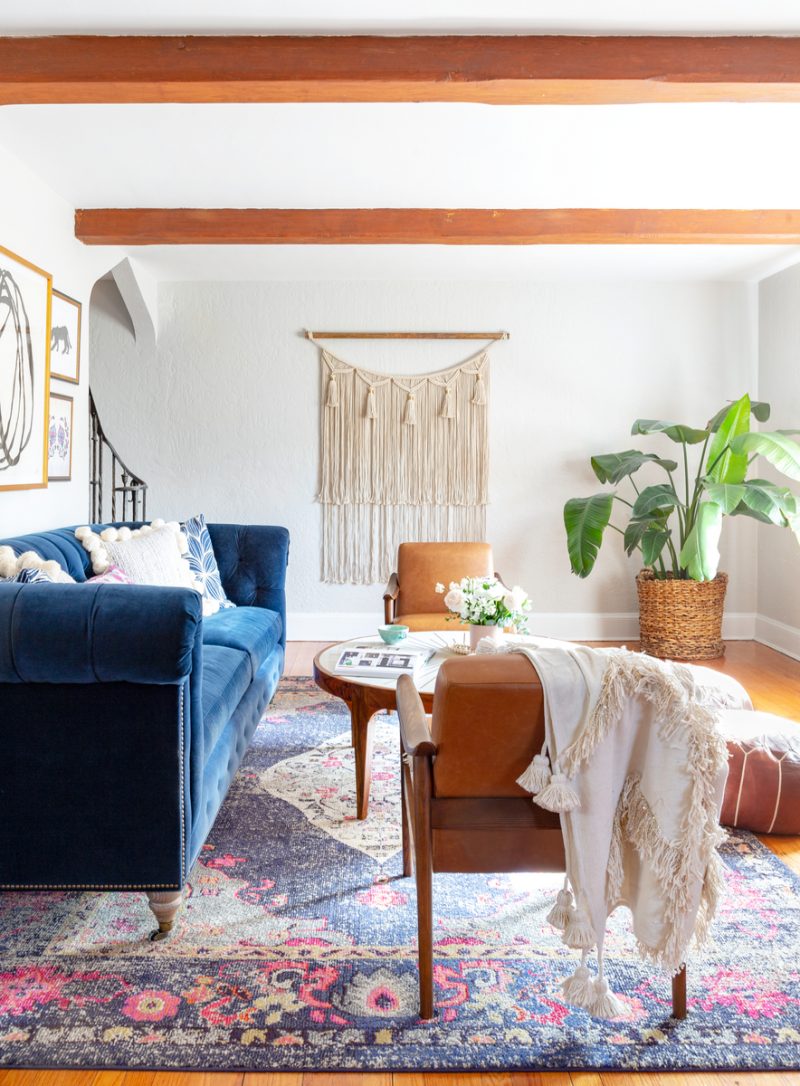
Your sofa’s seat and back heights should be within a few inches of the seat and back heights of any accent chairs in the room. While you want furniture and decor elements to fall on different vertical planes for visual interest, seating looks out of scale if it varies too wildly.
9. Get your side tables in order

10. Measure before buying a console

If you have a console table behind your sofa, it should never ever be taller than the height of the back of the sofa. And while opinions differ, we like console tables placed behind the sofa to run nearly the full length of the sofa itself, with no more than six inches bare on either side. Pro tip: consider a long and low bench in lieu of a traditional console for a more modern approach.
11. Remember the rug

Any area rug should be large enough to fit the first two legs of all pieces of furniture on it to avoid looking shrunken. Most living rooms require a rug that’s 8×10 or larger. Here are more tips on choosing the perfect rug.
12. Let there be light
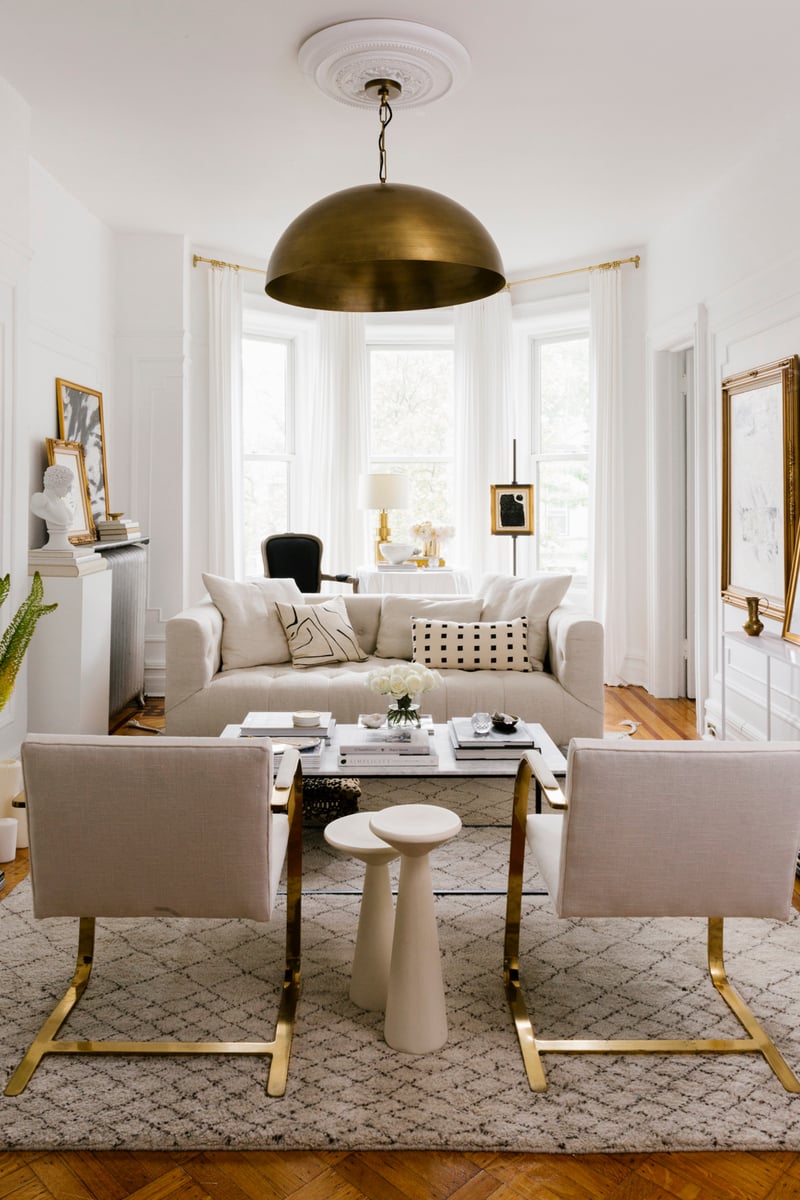
We couldn’t conclude this list without another mention of the handy dandy golden ratio. Multiply your ceiling height by two-and-a-half to get the proper width of the chandelier in inches. If your ceilings are 10 feet tall, then your chandelier should be about 25 inches wide. Hang the chandelier one-third of the distance between the ceiling and the floor, but at least seven feet above the floor for clearance.
We get it: rules can feel tricky. But that’s why we’re here. To take the guesswork out of the design process so you can sit back, relax, and watch the magic unfold. Kick off your project and feel good in your home.

